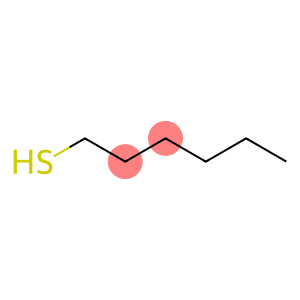1-Hexanethiol(CAS#111-31-9)
| Hazard Symbols | Xn – Harmful |
| Risk Codes | R10 – Flammable R20/22 – Harmful by inhalation and if swallowed. |
| Safety Description | S23 – Do not breathe vapour. S24/25 – Avoid contact with skin and eyes. S16 – Keep away from sources of ignition. |
| UN IDs | UN 1228 3/PG 2 |
| WGK Germany | 3 |
| RTECS | MO4550000 |
| FLUKA BRAND F CODES | 13 |
| TSCA | Yes |
| HS Code | 29309090 |
| Hazard Class | 3 |
| Packing Group | III |
Introduction
1-Hexanethiol is an organic compound. The following is an introduction to the properties, uses, preparation methods and safety information of 1-hexane mercaptan:
Quality:
1-Hexanethiol is a colorless to pale yellow liquid with a strong foul-smelling odor.
Use:
1-Hexanethiol has a variety of uses in industry and laboratories. Some of these main uses include:
1. As a reagent in organic synthesis for the preparation of other organic compounds.
2. It is used in the preparation of surfactants and softeners, and is often used in paints, coatings and detergents.
3. As a ligand for oxidants, reducing agents and complexing agents.
4. Used as leather treatment agent and preservative.
Method:
1-Hexanethiol can be prepared by a variety of methods, one of the commonly used methods is to react 1-hexene with sodium hydrosulfide to obtain it.
Safety Information:
1-Hexanethiol is irritating and corrosive at high concentrations and should be avoided from contact with the skin, eyes, and respiratory tract. Protective gloves, goggles, and respiratory protective equipment should be worn when in use. Avoid contact with substances such as oxidants to avoid dangerous reactions. Keep away from open flames and high temperatures when storing and transporting.








